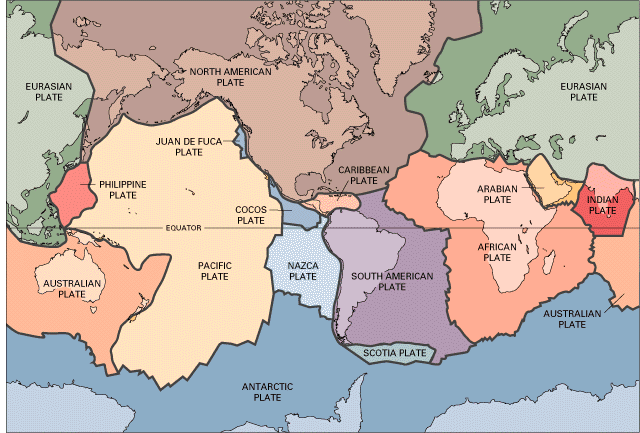EXPLORATION: Layers and Plate Tectonics
2. Plate Tectonics
Plate Tectonics
The earth's surface is broken into seven large and many small moving plates. These plates, each about 80 km thick, move relative to one another an average of a few centimetres a year.
Three types of movement are recognized at the boundaries between plates:
-
convergent
Convergent boundaries are areas where plates move toward each other and collide. Where an oceanic plate collides with a continental plate, the oceanic plate tips down and slides beneath the continental plate forming a deep ocean trench (long, narrow, deep basin.) An example of this type of movement, called subduction, occurs at the boundary between the oceanic Nazca Plate and the continental South American Plate. Where continental plates collide, they form major mountain systems such as the Himalayas.
-
divergent
At divergent boundaries, plates move away from each other such as at the Mid-Atlantic Ridge. Where plates diverge, hot, molten rock rises and cools adding new material to the edges of the oceanic plates. This process is known as sea-floor spreading.
transform-fault [i.e. slip and slide]
Transform
boundaries occur when two plates grind past each other with only limited
convergent or divergent activity. The San Andreas Fault zone is an
example of this type of boundary where the Pacific Plate on which Los
Angeles sits is moving slowly northwestward relative to the North
American Plate on which San Francisco sits.
Plate tectonics, the branch of science that deals with the process by which rigid plates are moved across hot molten material, has helped to explain much in global-scale geology including the formation of mountains, and the distribution of earthquakes and volcanoes
Look
at the map below which shows all of the plates that Earth is composed
of. Which plate do you live on? Are there any fault lines near your
home?
